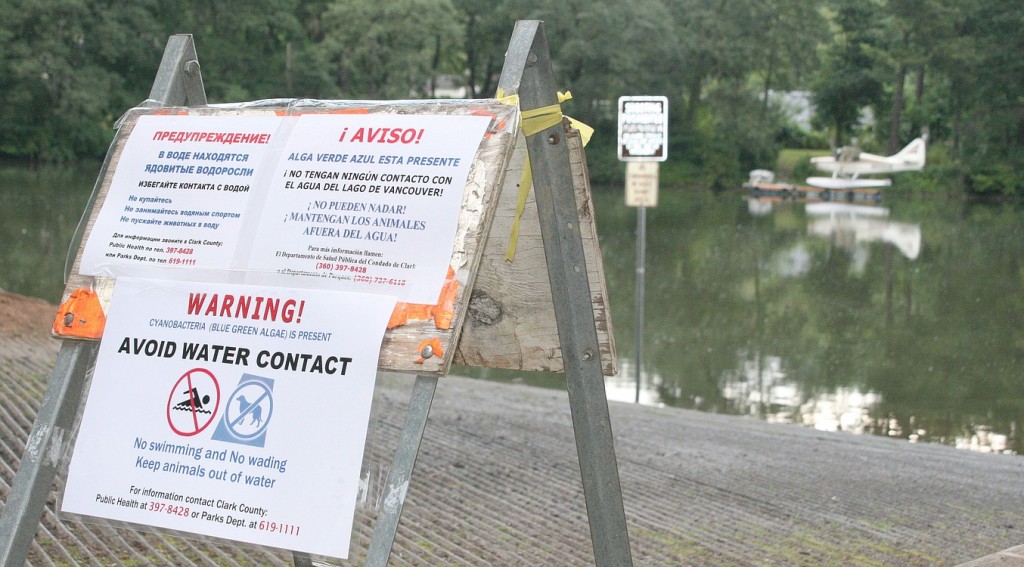The public is being advised to avoid contact with Lacamas Lake and Round Lake in Camas, including swimming, wading and jet skiing or water skiing, due to high levels of blue-green algae.
On Friday Clark County Public Health announced that routine test results confirmed the presence of the algae, also called cyanobacteria, in Lacamas Lake. It can be dangerous to human health, and pose a significant hazard to pets and livestock.
“It is especially important to keep children out of the lake because they are more likely than adults to swallow some water,” said Dr. Alan Melnick, Clark County health officer, adding that pets are also at high risk. “We want to minimize the chances of illness from water contact so people can have a safe, enjoyable July 4 holiday.”
Melnick said boating is still a safe activity, so long as people do not come into contact with the water.
“I feel bad,” he said. “I don’t want to ruin everyone’s Fourth of July, but I want people to be safe. We don’t want anyone to get sick.”





